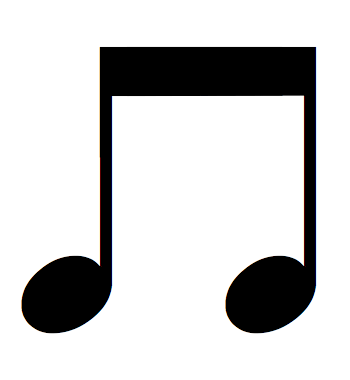
See? Same notation, different names! Since we are located in the United States, Hoffman Academy uses the fraction-based U.S. In the American system, we also have eighth rests and dotted eighth notes, which are known as quaver rests and dotted quavers respectively in the British system!.And it doesn’t stop there! There is also a hundred-twenty-eighth note ( semihemidemisemiquaver or quasihemidemisemiquaver )! If you want to see some of these in action, listen to the beginning of Beethoven’s Pathetique Sonata !.A sixty-fourth note ( hemidemisemiquaver ) is 1/16 of a beat, taking sixty-four of t hem to complete an entire 4/4 measure! That is a lot of notes in one measure!.It takes thirty-two of them to complete a measure! A thirty-second note ( demisemiquaver ) is ⅛ of a beat.It takes sixteen of them to complete a measure! A sixteenth note ( semiquaver ) is ¼ of a beat.It takes eight of them to complete a measure. An eighth note ( quaver ) is 1/2 of a beat.
QUAVER IN MUSIC FULL

Masses and prayers were largely sung in Latin, and even if someone couldn’t speak Latin themselves, they could learn to sing along.Īround 1250, a German music theorist named Franco of Cologne created a new system of notation that used squares and diamonds to indicate note durations. Some of the earliest Western Classical composers were monks and nuns (shout out to Hildegard von Bingen!). Most of Europe at the time was Roman Catholic, and the Roman Catholic Church used Latin. This makes sense considering that in the early days of modern musical notation (around 1000-1200 AD/CE), music was very important to religion. Music terminology from the United Kingdom, such as breve, crotchet, quaver, minim, has its roots in Latin. If you’re a student somewhere else, you might think that this music note makes a different sound than “ti”, but did you know that in some places the eighth note has a different name too? If you’re from the United Kingdom, you probably call this music note a “quaver!” Different countries have different musical terminology, which makes sense when different languages are spoken, but why are there TWO systems for English-speaking countries? Beyond the Quaver: Where (and When) Music Terms Came From If you study music in the United States, then you know that we call this an “eighth note”, and as a Hoffman Academy student, you know that it makes the sound “ti”. What is a quaver in music? Learn about quavers and discover other music note names below


 0 kommentar(er)
0 kommentar(er)
